Mastering Culinary Skills: Create Delicious Recipes
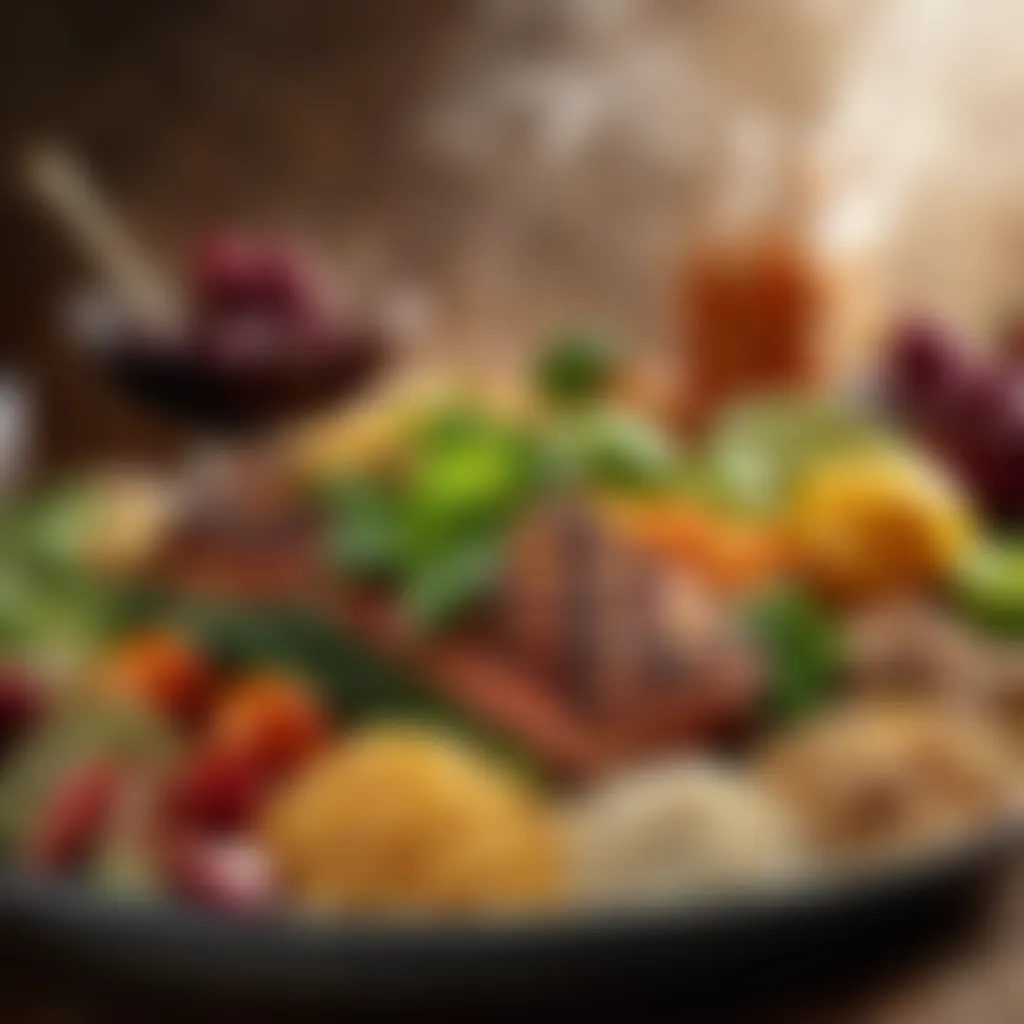
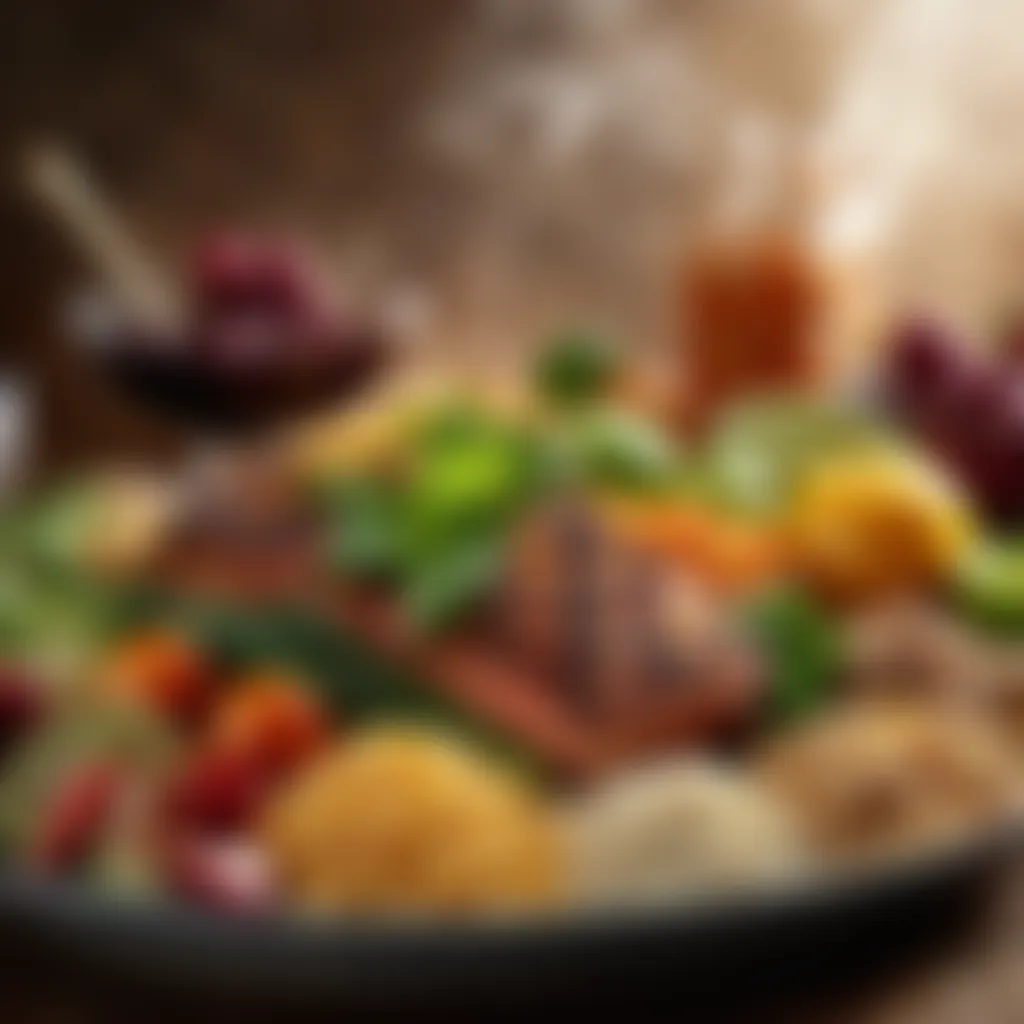
Intro
Cooking isn’t just about combining ingredients; it's a beautiful dance between creativity and tradition. Much like an artist with a canvas, a home cook has the power to transform basic components into a masterpiece. Understanding the nuances of this art can instill confidence and joy in the kitchen. In this guide, you’ll discover not only what to gather and how to prepare, but also the depth of flavors that emerge from simple techniques. Each section is designed to help you navigate the culinary landscape with ease, ensuring your journey from ingredient selection to savoring your creation is both enlightening and satisfying.
Ingredients:
Now, let’s dive into the essential ingredients for a basic yet versatile dish, say a vegetable stir-fry. Here’s what you’ll need:
- Vegetables: 2 cups (e.g., bell peppers, broccoli, carrots, snap peas)
- Protein (optional): 1 cup (tofu, chicken, or shrimp)
- Oil: 2 tablespoons (canola or olive oil)
- Garlic: 2 cloves, minced
- Soy sauce: 3 tablespoons
- Sesame seeds: 1 tablespoon (for garnish)
- Salt and pepper: to taste
Preparation Steps:
- Wash the Produce: Start by rinsing your vegetables under cool water. Ensure they're clean and free from any dirt.
- Chop and Dice: Prepare your vegetables: slice the bell peppers into strips, chop the broccoli into florets, and julienne the carrots. Dice any protein if used.
- Mince Garlic: Take the garlic and finely chop or mince it, releasing its aroma.
Technical Aspects:
- Temperature Settings: Set your burner to medium-high heat. The oil should shimmer before adding ingredients, indicating it’s hot enough to prevent sticking and to achieve a nice sear.
- Timing Specifics: Each vegetable varies in cooking time. Start with tougher veggies like carrots, then add softer ones like bell peppers after a minute. Aim to complete the stir-fry within 10 minutes for a crisp texture.
- Critical Techniques: Stir-frying requires constant motion in the pan to ensure even cooking. Use a spatula to keep everything moving and avoid burning.
Cooking Process:
- Heat the Oil: In a large skillet or wok, heat the oil until it's shimmering.
- Add Garlic: Toss in the minced garlic and cook for about 30 seconds until fragrant. Be cautious not to burn it as that will impart bitterness.
- Introduce Proteins: If using protein, add it now, cooking until fully done and slightly browned, this might take around 3-5 minutes.
- Vegetable Medley: Gradually introduce your assorted vegetables. Stir them frequently, making sure each piece gets equal exposure to the heat.
- Soy Sauce Finish: Once the vegetables are tender yet crisp, pour in the soy sauce. Stir to coat everything lightly. Allow cooking for an additional minute.
- Garnish: Finally, sprinkle the sesame seeds over the stir fry as you remove it from heat.
Troubleshooting Tips:
- Too Much Oil? If your dish looks greasy, add a few more veggies or cook on high heat for a minute to reduce excess oil.
- Not Flavored Enough? A pinch of salt and some freshly cracked pepper can enhance flavors without overpowering your dish.
- Too Soft? If your vegetables go mushy, you may have overcooked them. Keep a close eye on timing next time.
"In cooking, unlike some other art forms, mistakes usually lead to discoveries. Embrace the journey!"
By exploring and mastering the ingredients, techniques, and methods presented here, you’re on your way to transforming humble components into glorious meals that resonate with your unique culinary voice. The kitchen is your canvas; let your creativity flow.
Understanding Cooking Basics
Cooking is an age-old skill that many people take for granted, yet its fundamentals lay the foundation for a successful culinary experience. Understanding cooking basics encompasses numerous elements that are not only essential but offer a wealth of benefits, transforming mundane food preparation into a creative and rewarding endeavor.
The Importance of Cooking Techniques
Cooking techniques form the core of culinary mastery. Whether you’re sautéing, roasting, or poaching, each method brings out unique textures and flavors in ingredients. It's not just about following a recipe, but understanding how these techniques alter the final dish. The benefits are palpable: mastering these skills allows a chef to control the cooking process and achieve desired outcomes, enhancing flavors and elevating dishes from ordinary to extraordinary.
- Sautéing lends a quick, caramelized touch to vegetables and proteins, contributing depth to your meals.
- Roasting focuses on creating a rich, browned exterior while keeping the inside juicy and moist, suitable for meats and root vegetables.
- Poaching results in tender, succulent proteins, perfect for health-conscious dishes.
Not only does mastering these techniques create better meals, but it also builds confidence in the kitchen. A housewife who understands various cooking methods can adeptly experiment and innovate, tailoring the dishes to her family's preferences. It empowers one to turn a simple idea into a delightful feast.
Essential Kitchen Tools
Every artist has their tools, and cooking is no exception. A well-equipped kitchen is vital for efficient cooking and achieving excellent results. Here’s a breakdown of essential kitchen tools that should find a place in every household:
- Knives: A good chef’s knife is crucial for precision cutting. It’s worth investing in quality as it makes meal prep easier and safer.
- Cutting Board: Protects countertops and helps maintain knife sharpness. Consider getting boards made from wood or flexible plastic for easy maneuverability.
- Pots and Pans: Different sizes serve various purposes - from sauté pans for quick cooking to stock pots for making rich broths.
- Measuring Cups and Spoons: Accuracy in measurement aids in replicating recipes and achieving consistent results.
When equipped with the right tools, cooking becomes smoother and more enjoyable. Cleaning and maintaining them also fosters good kitchen habits. Ignoring the importance of these essentials can lead to frustration and uninspired cooking.
Common Culinary Terms
Familiarity with culinary jargon enriches the cooking experience. Each term often encapsulates a specific technique or process that can significantly impact how a dish comes together. Here are a few commonly used culinary terms:
- Mise en Place: This French term translates to "everything in its place" and reflects the practice of preparing ingredients before beginning to cook. It streamlines the cooking process.
- Al Dente: Often used when cooking pasta, this term means "to the tooth," referring to that perfect bite when the pasta is cooked but still has a slight firmness.
- Reduce: A cooking technique that involves simmering or boiling liquids to concentrate flavors and thicken the consistency of sauces or soups.
"The kitchen is a place where words can guide you, yet it is your hands that must mold the clay."
Understanding these terms not only aids in following recipes accurately but also opens up avenues for creativity. As one becomes more comfortable with the language of cooking, the possibilities of crafting delicious dishes expand dramatically.
In summary, grasping the basics of cooking is paramount. Cooking techniques elevate meals, essential kitchen tools enhance efficiency, and knowing culinary terms builds confidence in the kitchen. For any housewife, these elements serve as stepping stones towards culinary artistry.
Selecting Quality Ingredients
Selecting quality ingredients is akin to laying the foundation of a house; without a strong base, the entire structure is at risk. In the realm of cooking, the ingredients you choose dictate not just the taste but also the nutritional value, presentation, and overall success of a dish. Quality ingredients can elevate a meal from something ordinary to a culinary delight.
The significance of this aspect cannot be understated. Fresh produce, for instance, tends to be richer in flavor and texture. Not only does this enhance the sensory experience of a meal, but it also contributes to better health. When you source ingredients thoughtfully, you support local farmers and sustainable practices, which is something to feel good about.
Understanding Freshness
Understanding freshness is a key component in selecting quality ingredients. Fresh items generally offer superior flavor and texture. For instance, a vine-ripened tomato boasts a sweetness and juiciness that a month-old counterpart simply cannot match. But how can you tell if something is fresh?
- Look at colors: Bright, vivid colors indicate freshness. A dull hue can mean the produce is past its prime.
- Check for firmness: Fresh fruits and vegetables should have a solid feel. If they’re too soft or mushy, steer clear.
- Smell: The aroma is often a good indicator. Fresh items will usually have a robust scent. If something smells off or sour, best to put it back.
Freshness extends to meats and fish as well. Fresh seafood, for example, should smell like the ocean—not fishy. Checking for clear eyes and shiny skin can also indicate freshness in fish.
Choosing Seasonal Produce
Choosing seasonal produce is like picking the best fruits from the garden—things just taste better when they’re in season. Seasonal ingredients are often at their peak in terms of flavor and nutritional value. For instance, ripe strawberries in June will be far different from cold-stored strawberries in January. Here are some reasons to focus on seasonality:
- Flavor: Seasonal items are allowed to grow naturally, developing optimal taste.
- Cost-effective: Purchasing in season often shaves dollars off your grocery bill as supply meets demand.
- Environmental impact: It cuts down on long-distance transportation, making it a more sustainable choice.
To make your culinary life easier, familiarize yourself with a seasonal produce calendar for your region. It will help you plan meals that are both delicious and responsible.
Meat and Seafood Quality Indicators
When it comes to meat and seafood, knowing what to look for is critical. Bad quality can ruin a dish and pose health risks. Here are tips to ensure you choose wisely:
- For Meat: Look for a deep red color in beef, with a firm texture and minimal juice pooling. Pork should be pinkish, while poultry skin should be smooth and free of blemishes.
- For Seafood: Fresh fish should have tight, glistening scales and clear eyes. If the fish smells overly fishy, it's actually not fresh. Additionally, check the gills; they should be bright red or pink, indicating freshness.
- Certifications and Labels: Choose products that are certified, like organic or grass-fed, as these often adhere to higher quality standards.
"Quality is not an act, it is a habit." - Aristotle
Understanding these aspects helps ensure that your culinary creations are built on a strong foundation, allowing your dishes to shine. Let us not forget, selecting top-notch ingredients is not just a step; it's a philosophy that every avid cook should embrace.


Flavor Profiles and Their Construction
Flavor profiles are the backbone of any dish, turning simple ingredients into a cohesive experience on the palate. When you think about cooking, it’s not just mixing things together; it’s about understanding how tastes interact and how to balance them to create something remarkable. This understanding can make your meals sing, whether you’re serving up a home-cooked family dinner or preparing a dish for a special occasion. There’s a world of flavors out there, and each has its own characteristics, so let’s dive into how these can be constructed.
The Science of Taste
Taste is an intricate dance of sensations that our taste buds and olfactory senses experience. Scientifically, there are five primary tastes: sweet, sour, salty, bitter, and umami. Each of these plays a crucial role in shaping our culinary creations.
- Sweet - Often derived from sugars, fruits, or honey, sweetness can elevate flavors, making them more palatable.
- Sour - Think about the bright zest of lemons or the sharpness of vinegar. Sourness can awaken a dish, providing contrast to sweetness or richness.
- Salty - This flavor highlights other tastes. It’s about enhancing flavor notes, not just adding salt.
- Bitter - Bitterness can add depth. Foods like dark chocolate, coffee, or certain greens contribute a valuable contrast.
- Umami - Known as the savory taste, umami comes from ingredients like mushrooms, tomatoes, and aged cheese; it brings a satisfying quality to dishes.
Understanding these tastes helps in consciously constructing flavor profiles. For instance, balancing sweetness with acidity can brighten up a sauce, making it more lively and less one-dimensional.
Balancing Flavors
Now that we've touched on the types of flavors, let’s discuss the art of balancing them. This isn’t a strict formula; rather, it’s about playing around and experimenting until something clicks. Here’s how you can achieve balance:
- Layer Flavors: Start with a solid base, then gradually add in elements to build complexity. For example, a tomato sauce can begin with sautéed garlic and onions, followed by fresh tomatoes, a sprinkle of sugar, and a dash of vinegar. Each step contributes something unique.
- Taste As You Go: This is crucial. Don’t just trust recipes blindly. Take a spoon, give it a taste, and adjust as necessary. Maybe it needs a pinch of salt or a splash of lemon juice.
- Contrasting and Complementing: Sometimes flavors should clash beautifully, while other times they should work in harmony. For instance, pairing sweet roasted carrots with a tangy yogurt dressing creates a delightful contrast that’s pleasing to the palate.
- Acid is Key: Don’t shy away from adding acidity at the end of a dish. A squeeze of lemon or a splash of balsamic vinegar can brighten flavors and tie everything together superbly.
Herbs and Spices: The Aromatic Art
Herbs and spices are what truly differentiate a good dish from a great one. They add layers of aroma and flavor that can transform your cooking. While there are countless herbs and spices, understanding their uses can make all the difference:
- Herbs: Fresh herbs like basil, parsley, and cilantro can bring finese. They tend to work best when added towards the end of cooking, preserving their vibrant flavors. Dried herbs like oregano or thyme are more robust and can stand up to longer cooking times.
- Spices: From cumin to coriander, spices often need a little heat to bloom. Toasting spices lightly in a pan before adding other ingredients can unleash hidden oils and intensify their flavors.
- Flavor Combinations: Explore combinations that work well together. For instance:
- Quantity Matters: Start with smaller amounts of herbs and spices. You can always add more, but it’s hard to take away if you overdo it.
- Garlic and rosemary work wonders on roasted meats.
- Cilantro and lime can elevate fish dishes immensely.
"The beauty of cooking lies not only in the flavors presented but in how those flavors come together to spark joy and warmth around the dinner table."
In sum, constructing flavor profiles is less a science and more an art form, requiring intuition more than rigid guidelines. Getting hands-on with cooking, being unafraid to tweak, and allowing your taste to guide you will create delicious dishes that mirror your unique culinary style.
Recipe Development Process
The journey of creating a standout dish begins long before the heat is turned on or the oven preheated. In this process, recipe development stands as a significant pillar, guiding aspiring cooks on how to transform their culinary ideas into delicious realities. This section digs into the essentials of recipe development, focusing on three key aspects: brainstorming ideas, prototyping and testing, and adjustments and finalization. Developing a recipe isn’t merely about throwing ingredients together; it’s about crafting something that excites the taste buds and nourishes the soul.
Brainstorming Ideas
At the heart of every successful recipe lies a well-thought-out idea. Brainstorming is akin to sowing the seeds of creativity in the kitchen. Here, culinary enthusiasts allow themselves to think broadly and outside the box. It’s about gathering inspiration from various sources—be it a family recipe passed down through generations, a food blog, or a recent restaurant experience.
To get started:
- Jot down flavors you love: Make a list of your favorite ingredients. Maybe it’s zesty lemons or hearty mushrooms. Writing things down can provide a springboard for new combinations.
- Consider the season: Fresh produce can guide your choices. For example, juicy summer tomatoes can inspire a fresh salad, while earthy winter squashes might lead you towards a comforting soup.
- Explore cultural dishes: Researching global cuisines can open new avenues. Perhaps consider an Italian risotto mixed with Japanese miso flavors—a fusion that could be fascinating.
The brainstorming stage can often feel chaotic, but embracing that whirlwind of inspiration is exactly what makes it fruitful. It’s crucial to play with ideas and let them marinate in your mind a little before proceeding.
Prototyping and Testing
Once you’ve got a handful of ideas, it’s time to prototype. This stage involves taking those concepts and putting them to the test. It’s like being a scientist in your kitchen—experimentation is key.
- Start with small batches: Develop a mini-version of your recipe. This helps in preventing waste while enabling you to tweak flavors without feeling overwhelmed.
- Follow basic techniques: Stick to essential cooking methods that you’re comfortable with. This allows you to focus on the flavors and textures rather than getting bogged down by overly complicated techniques.
- Keep notes: Document every step, from ingredient amounts to cooking times. This creates a reference for future attempts and helps in identifying what worked and what didn't.
Testing the recipe is where the magic happens. It’s a crucial step to ensure the flavors harmonize and each component serves its purpose. Don’t hesitate to involve family or friends for a taste test; fresh opinions can shed light on aspects you might overlook.
Adjustments and Finalization
The magic of cooking lies in the ability to adapt and refine. After testing, some adjustments will likely be necessary. Consider this phase an opportunity to polish your creation before serving it up.
- Taste repeatedly: Actively evaluate the flavors at different stages. Is the dish too salty? Does it need more acidity? Adjusting these aspects can greatly enhance the overall experience.
- Consider texture: Think about how the dish makes you feel. A balance of textures—creamy, crunchy, chewy—can elevate your recipe.
- Seek feedback: A fresh set of eyes (or taste buds) can be valuable. Sometimes, you can become so familiar with a dish that you lose objectivity.
- Final tweaks: Once you fine-tune your new recipe, it’s important to write down the final version as a reference for the future. This ensures that your hard work won’t be lost and can be replicated later.
"Cooking is like love. It should be entered into with abandon or not at all." – Julia Child
In closing, recipe development is a rewarding and sometimes challenging process. However, the benefits it brings are immeasurable. It not only fosters creativity but also offers a unique chance to express your culinary voice. As you embark on this journey, remember that every great cook was once a beginner, and every dish has its story.
Culinary Techniques to Elevate Dishes
When diving into the culinary realm, mastering specific techniques can change an ordinary meal into an extraordinary experience. Culinary techniques are not merely methods of cooking; they are the foundational skills that transform ingredients into art on a plate. These techniques enable cooks, whether seasoned chefs or enthusiastic home cooks, to unlock the flavors and textures of food, thereby enhancing their dishes and impressing anyone they serve.
In this segment, we’ll explore three key techniques: sautéing and roasting, sous vide, and the intricate art of plating. Each offers invaluable insights and practices to elevate your culinary creations.
Techniques of Sautéing and Roasting
Sautéing and roasting are popular cooking methods, each with its own unique set of benefits.
Sautéing involves cooking food quickly in a small amount of fat over relatively high heat. This method is not just about speed; it allows for Developing rich flavors while retaining the ingredients’ texture and moisture. Think of how finely chopped onions burst with flavor in a pan, becoming translucent and golden when properly sautéed. For precision, ensure you have your ingredients prepped before you start because the process moves quickly. A few key points to remember:
- Use the right pan: A heavy-bottomed skillet conducts heat evenly.
- Don’t overcrowd the pan: Add only as much food as can lie flat to ensure even cooking.
- Control the heat: Adjust the flame as needed to prevent burning.
On the other hand, roasting is a dry-heat method that works wonders for meats and vegetables alike. Roasting not only caramelizes the natural sugars in food, enhancing flavor but also creates a lovely, crispy exterior while keeping the insides tender. Take a simple chicken; when roasted, it turns golden brown, the skin becomes crunchy, and those juices remain locked inside, ensuring every bite is moist. Consider these tips when roasting:
- Preheat your oven: This ensures even cooking from the get-go.
- Use a roasting rack: Elevating the food helps it brown evenly.
- Baste occasionally: This adds moisture and flavor.
Preamble to Sous Vide
The sous vide technique, which translates to "under vacuum" in French, involves sealing food in a bag and cooking it to a very precise temperature in a water bath. This method has found its way into professional kitchens and is gaining popularity among home cooks, and rightly so. Sous vide offers near-perfect control over doneness, ensuring that meats, for example, are cooked evenly from edge to center.
What makes sous vide particularly attractive is the ability to infuse flavors deeply. By adding herbs or spices to the vacuum bag, the flavors seep in slowly, creating a nuanced taste that traditional methods may not achieve. Here’s why sous vide is a game-changer:
- No drying out: Because of the low cooking temperatures, the food won’t lose moisture, preserving its texture.
- Precision: You can set the water bath to the exact desired temperature, removing any guesswork.
- Hands-off cooking: Once set, sous vide requires minimal attention. Just finish the food with a quick sear for that sought-after crust.
The Art of Plating
Once a dish is perfectly cooked, the next step is transforming that culinary creation into a feast for the eyes. Plating, often overlooked by home cooks, is, in fact, an art form that can elevate a simple meal into fine dining. Presenting food thoughtfully can spark anticipation and elevate the dining experience.
A few principles of great plating include:
- Balance and Space: Ensure your plate isn’t overcrowded. Use negative space and arrange food in a balanced manner.
- Color Contrast: Different colors appeal to the eye. Think vibrant greens against rich brown meats or a splash of sauce against a white plate.
- Height and Texture: Layering ingredients, rather than laying them flat, adds visual interest. Use garnishes to introduce varying textures — crispy herbs or purées can do wonders.
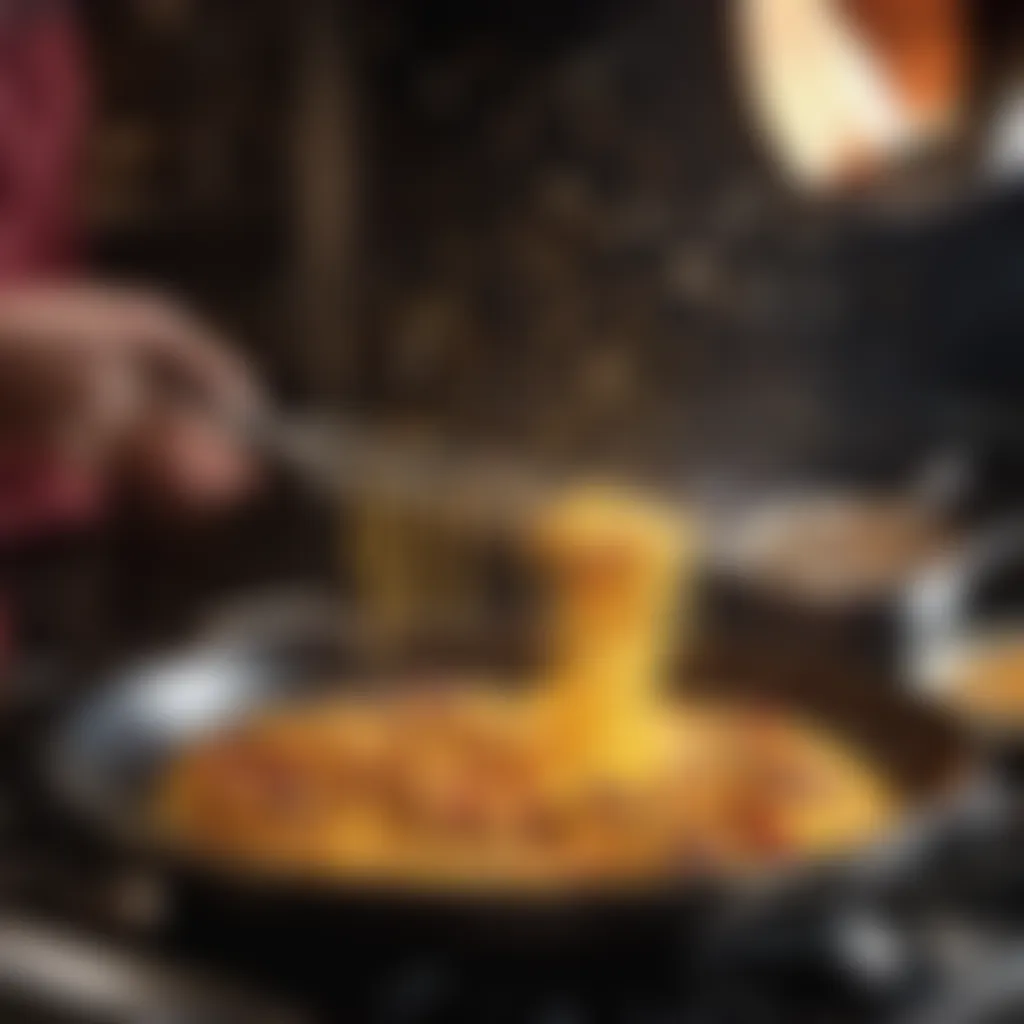
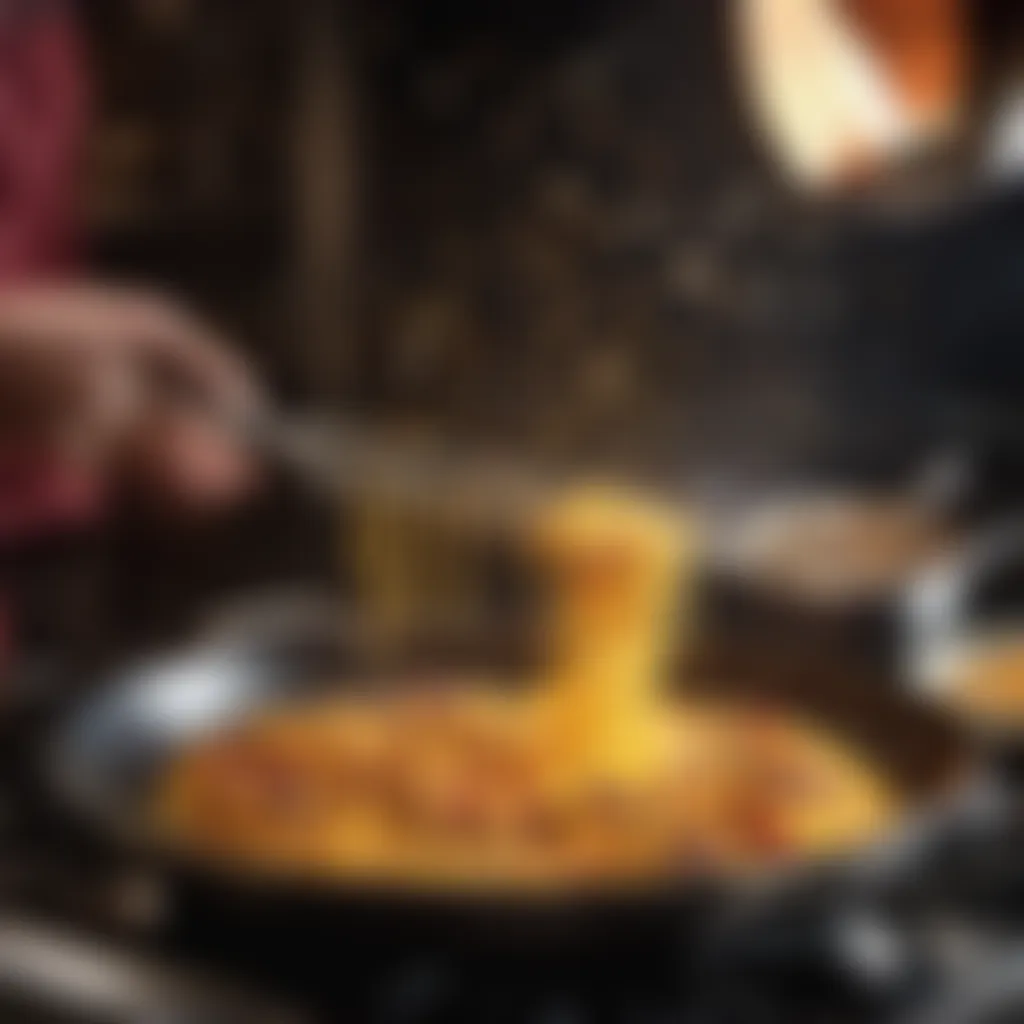
Life is too short for boring plates. Let your creativity flow!
Plating is the final touch, and it doesn’t just look good – it enhances your meal’s taste. When food is presented beautifully, it not only attracts the eyes but also stimulates the appetite.
These culinary techniques not only impart essential skills but also empower you to approach cooking with confidence. Whether sautéing, roasting, exploring sous vide, or artfully arranging your plating, each technique serves to elevate the ordinary into the extraordinary.
Cultural Influences on Cooking
Cooking is far more than just a means to satisfy hunger; it serves as a canvas for cultural expression. The various ways different cultures approach food can reveal much about their traditions, values, and histories. Understanding the cultural influences on cooking allows us to create recipes that are not only delicious but also rich in storytelling and meaning. This section emphasizes the importance of appreciating these influences, while also considering how they can impact the flavors, techniques, and overall experience of a meal.
Exploring Global Cuisines
Every corner of the globe offers a unique culinary experience that reflects its people. For instance, Italian cooking showcases the vibrant use of tomatoes and olive oil, symbols of warmth and tradition. In contrast, Japanese cuisine focuses on presentation, seasonality, and respect for fresh ingredients.
When exploring global cuisines, one can appreciate how diverse spices, herbs, and cooking methods tell stories of the regions they originate from. Dishes like Indian curry or Mexican mole are not just meals; they encapsulate centuries of culture and tradition.
To dive deeper:
- Ingredients often reflect local agriculture and climate, influencing what's available to cook.
- Cooking methods tell us about historical practices, such as smoking, fermenting, and baking.
- Cultural rituals surrounding food not only enhance the sense of community but also offer insights into societal norms and values.
Fusion Cooking: A Melting Pot
In an ever-increasingly globalized world, one culinary trend stands out: fusion cooking. This form of culinary creativity blends elements from different cuisines, producing combinations that might previously have seemed unconventional. Imagine Korean tacos or California rolls; these dishes illustrate how flavors and techniques can meld beautifully to create something fresh.
Fusion cooking encourages flexibility and experimentation, inviting home cooks to try new combinations. However, it’s essential to strike a balance. Here are a few tips on successful fusion cooking:
- Know the fundamentals of both cuisines before experimenting.
- Be respectful to the ingredients: don’t just throw things together; consider each element’s role in the final dish.
- Introduce common themes such as textures, spices, or flavors that resonate between the two cuisines.
Fusion cuisine not just tests your creativity but also expands your palate and understanding of food composition.
Traditional vs. Modern Practices
Tradition lays the foundation for culinary practices, telling stories through recipes passed down generations. Traditional cooking often emphasizes simplicity, seasonal ingredients, and time-honored techniques. Consider how stewing and braising reflect many cultural values, focusing on comfort and nourishment.
On the flip side, modern cooking encompasses innovation and technological advancement. Techniques like molecular gastronomy or sous vide are gaining traction, elevating meals to unexpected heights. Understanding this juxtaposition encourages cooks to honor traditional methods while exploring more contemporary approaches.
When pondering this balance:
- Embrace your roots: Always be aware of where your culinary journey began.
- Stay open to change: Constantly learning and adapting leads to growth.
- Combine the old with the new, ensuring that even the most modern techniques honor the flavors and practices of the past.
Culinary arts thrive on this interplay between the traditional and modern, proving that the kitchen can indeed be a space of creativity and historical resonance.
Health and Nutrition in Cooking
Cooking is more than just a way to fill our stomachs; it’s a vital step in ensuring our health and well-being. By understanding and implementing the principles of health and nutrition in cooking, individuals can elevate their culinary repertoire to foster better nutrition for themselves and their families. Emphasizing health in cooking isn't simply a passing trend—it's a lifelong commitment to making informed dietary choices. The right ingredients and methods can turn a simple meal into a powerhouse of nutrients.
Understanding Nutritional Values
It’s crucial to know what’s on your plate. Each food item offers a unique nutritional profile, filled with vitamins, minerals, and macros. When selecting ingredients, understanding nutritional values can lead one down the path of healthier eating habits. For instance, leafy greens like spinach and kale are key players in a nutrient-dense meal, providing essential vitamins A, C, K, and magnesium.
Here are some ways to assess nutritional values:
- Read Labels: Packages often include a wealth of information on calories, fats, sugars, and sodium.
- Portion Control: Understanding serving sizes can help manage intake and make meals nutritionally balanced.
- Nutrient Density: Focus on foods that provide higher nutrients with fewer calories, such as fruits and vegetables, legumes, and whole grains.
"The health of the body is in direct correlation with the foods we consume. Make choices that celebrate health."
By grasping these elements, anyone can begin to appreciate how their food choices affect their life and health in the long run.
Health-Conscious Cooking Methods
When it comes to preparing meals, cooking methods can greatly impact the nutritional value of your food. Certain techniques preserve nutrients better than others. It’s worth considering the following approaches for health-conscious cooking:
- Steaming: This method helps retain vitamins and minerals in vegetables, keeping them vibrant and nutrient-rich.
- Grilling and Roasting: These methods can provide flavor without necessitating hefty amounts of fats. Cooking at high temperatures enhances taste significantly.
- Sautéing with Minimal Oil: Using less fat while cooking won’t compromise flavor, especially if you add herbs and spices to pack a punch.
- Slow Cooking: This method can allow flavors to meld, while also tenderizing tougher cuts of meat without excessive fats or oil.
By integrating these methods, meals can become more wholesome and nutritious, while still being flavorful and enjoyable.
Incorporating Dietary Restrictions
In today’s diverse culinary landscape, many individuals have specific dietary restrictions. Whether due to allergies, intolerances, or lifestyle choices like vegetarianism or veganism, acknowledging and accommodating these needs in cooking can still result in delicious meals. Here’s how to navigate these waters:
- Substitution: Find suitable swaps for restricted ingredients, such as almond milk instead of cow’s milk or flaxseeds instead of eggs.
- Experimenting with Ingredients: Explore new grains like quinoa or farro as alternatives to traditional ones. This not only meets dietary restrictions but enhances the meal's profile.
- Communication: When cooking for others, it’s essential to ask about allergies and dietary preferences. Open conversations help ensure everyone enjoys the meal without fear of adverse reactions.
Health and nutrition in cooking open doors to creative possibilities, paving the way for healthier choices that don't sacrifice taste. With thoughtful consideration of nutritional values, conscious cooking methods, and awareness of dietary restrictions, culinary endeavors become significantly more rewarding.
Sustainability in Culinary Arts
In today’s rapidly changing world, the cultivation of sustainable practices within the culinary arts has become more crucial than ever. With environmental awareness on the rise, it's vital for every cook, whether professional or home-based, to consider how their choices impact the planet. Embracing sustainability isn't just a trend; it's a necessity for our future. This section explores how sustainability can enhance your cooking while also benefiting the environment.
Farm-to-Table Movement
The farm-to-table movement is a vital aspect of sustainable cooking, promoting the direct connection between producers and consumers. By sourcing ingredients locally, not only do you elevate the freshness of your dishes, but you also reduce the carbon footprint associated with transportation. Imagine biting into a ripe tomato or sweet corn that’s just a few hours old; the flavor is incomparable. Buying from local farmers helps sustain your community's economy and encourages biodiversity by valuing seasonal produce.
When you participate in this movement, you support practices that are often more environmentally friendly. Local farms tend to use organic methods, minimizing the use of chemicals. Moreover, the seasonal nature of farm-to-table means embracing what grows naturally at certain times, which aligns with ecological balance. To delve deeper, you can visit resources like Wikipedia.
Reducing Food Waste
Food waste is a staggering issue, with a significant portion of the food produced globally never reaching our plates. The statistics can be shocking. According to the United Nations Food and Agriculture Organization, about one-third of all food produced is wasted. This not only represents lost resources but also contributes to greenhouse gas emissions. By focusing on ways to reduce food waste, you can make a noticeable impact.
Some practical tips include:
- Plan meals carefully: Write down what you need before going shopping to avoid impulse buys.
- Use leftovers creatively: Transform yesterday’s roast chicken into a stir-fry the next day.
- Composting: If you can't eat it, put it back into the earth. Composting kitchen scraps enriches the soil.
By adopting these practices, you make a small change that can lead to a larger cultural shift towards minimizing waste in your household.
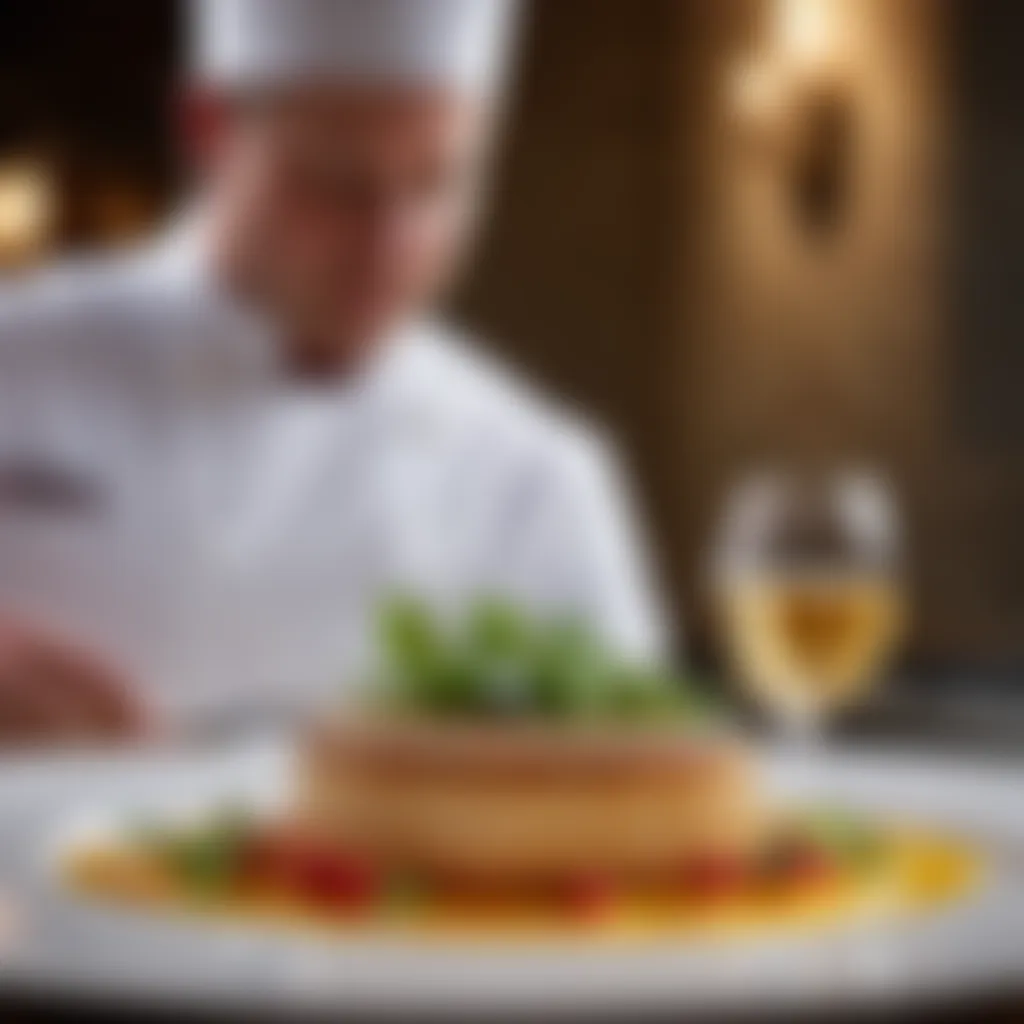
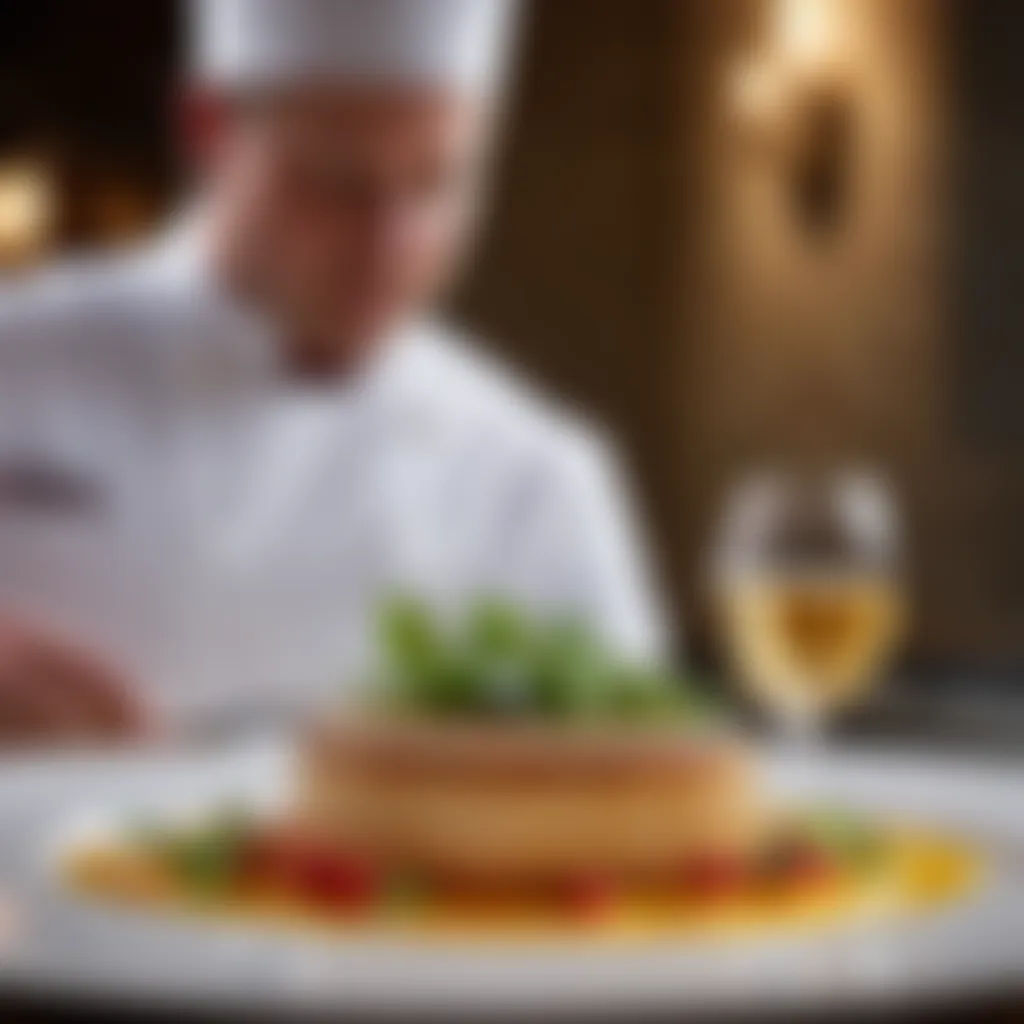
"Reducing food waste is not just about saving money; it's about honoring the hard work that goes into producing every ingredient."
Sustainable Sourcing of Ingredients
Sourcing ingredients sustainably involves being mindful of where your food comes from and how it’s produced. This means choosing products that are grown or raised without harmful chemicals and under ethical conditions. For instance, opting for grass-fed beef or organic chicken assures you that the animals were treated humanely and fed a natural diet. Similarly, purchasing seafood that is certified by sustainability groups helps protect our oceans.
When shopping for ingredients, look for labels that indicate sustainable practices, including:
- Organic certifications: These verify that the food was produced without synthetic pesticides or fertilizers.
- Fair Trade labels: These ensure that farmers receive fair wages and work in safe conditions.
- Local sourcing: Always verify your farmer’s market or local suppliers, ensuring that you’re getting the best without the extensive transport.
By being intentional in your choices, you're not only elevating your cooking but also fostering a sustainable food system that prioritizes the health of our planet. You can find further information on this topic by visiting Britannica.
Innovations in the Culinary Landscape
In the modern culinary world, innovation has become as essential as the salt and pepper on a chef's counter. It’s all about pushing boundaries, exploring new techniques, and bringing ingredients to life in unexpected ways. As home cooks, understanding these innovations equips us with tools to enhance our cooking experiences and elevate our dishes. The newer methods we adopt not only honor culinary traditions but also encourage creativity and individuality in the kitchen.
Technology's Role in Cooking
Technology has completely transformed how we approach cooking. With the rise of smart kitchen gadgets, cooking has become more intuitive. For instance, slow cookers that can be programmed via a smartphone app or sous vide precision cookers ensure that anyone can achieve restaurant-quality results without being a culinary expert.
"Technological advancements in cooking allow the home chef to access techniques that were once reserved for professional kitchens."
Not to forget the vast array of online resources available today! Websites, apps, and even YouTube tutorials let us learn new techniques at our own pace. Want to master the art of caramelization? Just pull up a video on your device or read a step-by-step guide. Tools like kitchen scales help with precise measurements, ensuring that our recipes turn out as intended. This fusion of technology with cooking not only saves time but also reduces the guesswork, allowing us to enjoy the process much more.
Emerging Trends in Food Preparation
The culinary landscape is continuously shifting with the arrival of new trends. These are heartfelt reflections of society’s evolving tastes and values.
- Plant-Based Dining: More people are gravitating toward vegetarian and vegan diets, pushing even the most traditional cook to experiment with plant-based recipes. This trend is about using creativity to make dishes delicious while being environmentally conscious.
- Fermentation Revival: Fermented foods are gaining popularity again in home kitchens. From kimchi to kombucha, fermentation adds unique flavors while also boosting health benefits. There’s a sense of connection when you make something from scratch, waiting for the magic to happen as flavors develop.
- Health-Conscious Choices: As awareness grows regarding ingredients and their nutritional values, there's been a surge in meals made with wholesome, clean ingredients. Cooks are now more focused on whole grains, superfoods, and natural sweeteners.
These trends encourage us to reinvent classic recipes and adapt them to meet current dietary preferences or health objectives.
The Impact of Social Media on Cooking
The age of digital has revolutionized how we perceive cooking. Platforms like Instagram and TikTok have reshaped culinary narratives, making them more visual, engaging, and sometimes even entertaining.
Home cooks are now influencers, sharing their unique recipes and cooking styles. This community-driven approach cultivates a spirit of sharing and learning together. People can post photos of their meals or video tutorials demonstrating their cooking processes, sparking conversations among food enthusiasts worldwide.
- Hashtags: The power of hashtags allows home chefs to connect with similar-minded cooks all over the world. By searching #homecooking or #cheflife, users can find inspiration, tips, and an array of new recipes to try.
- Challenges: Social media brings about challenges that promote creativity. From the #30DayMealPrepChallenge to viral recipes that feature unusual combinations, these initiatives push home chefs to step out of their comfort zone.
Through this digital revolution, cooking has turned into an exchange of ideas and flavors, inspiring everyone to cook with more passion and intention.
Mastering the Art of Pairing
Food pairing is a delicate dance of flavors, one that can elevate a meal from ordinary to extraordinary. Understanding the principles of pairing is essential for anyone looking to refine their culinary approach. Not only does it enhance the sensory experience of a dish, but it can also significantly impact the way flavors come together to create harmony on the plate.
The beauty of mastering pairings lies in the way it allows for personal expression. It opens the door to creativity, encouraging cooks to explore new combinations and push the boundaries of tradition. By considering factors such as flavor profiles, textures, and aromas, one can create a dish that is not just food, but an experience.
Food and Wine Pairing Fundamentals
When thinking about pairings, wine often springs to mind. The right wine can complement a meal beautifully, accentuating flavors and enhancing the overall dining experience. To get started, here are some foundational rules that are worth considering:
- Match weight with weight. A light bodied wine, such as a Pinot Grigio, works well with light dishes like salads or grilled fish, while a bold Cabernet Sauvignon pairs nicely with hearty meats.
- Consider acidity. Foods with high acidity, like tomatoes or citrus, generally pair well with wines that have a similar acidity. Think of a Sauvignon Blanc with a zesty tomato salsa.
- Explore complementary flavors. A sweet Riesling can balance spicy dishes perfectly, creating a contrast that excites the palate.
While these rules provide a scaffold, it's important to keep in mind that everyone's palate is unique. Experimenting with pairings is encouraged, as personal preferences coupled with knowledge can lead to delightful discoveries.
Pairing Flavors and Ingredients
The art of pairing is not confined to just food and wine; it extends to mixing and matching ingredients within dishes. Consider these key elements:
- Flavor intensity. It’s important to find a balance between strong and subtle flavors. For instance, pairing bold blue cheese with nuts helps the nuttiness shine through, while still allowing the cheese to make its presence felt.
- Texture. Pairing crunchy and creamy elements can create a satisfying contrast. Think about the crunch of toasted breadcrumbs atop creamy risotto; the play between these textures can elevate a simple dish.
- Cultural traditions. Many cuisines have their own pairing traditions that can guide your choices. Thai cuisine's blend of sweet, sour, salty, and spicy showcases how diverse pairings can be and inspire creative approaches in your cooking.
Ultimately, the key lies in understanding the fundamental characteristics of what you are working with and finding that sweet spot where they interact well.
The Role of Presentation
They say we eat with our eyes first, and this couldn’t be more true in the culinary world. Presentation plays a significant role in the overall dining experience, impacting how flavors are perceived by our senses. Here are several pointers to enhance your presentation skills:
- Color contrast. Aim for a colorful plate. Bright greens, rich reds, and creamy whites all on one dish can be very visually appealing.
- Height and layering. Stacking ingredients or creating height with your presentation can draw the eye. Think about a tower of savory pancakes topped with colorful vegetables.
- Garnishing. Fresh herbs or edible flowers not only enhance the look but can also add an extra zing of flavor.
As you embrace these techniques, remember that presentation should enhance, not overpower, the dish. The aim is to create a visual feast that creates anticipation for the delightful flavors to follow.
"A plate that sings is as important as the flair of its flavors."
By mastering the art of pairing, whether it's food and wine, flavors and ingredients, or the way you present your dish, you're not just creating meals. You're crafting memorable experiences that resonate with those at your table.
Navigating the Restaurant World
In the realm of culinary arts, the restaurant world serves as a crucible where many home chefs test their skills and creativity. Understanding how to navigate this landscape is essential, not just for the aspiring chef but also for anyone looking to enjoy a fulfilling dining experience. This section sheds light on three main areas: Understanding Restaurant Menus, The Chef’s Perspective, and Dining Etiquette and Experience. Together, these elements create a solid framework for making the most of what the restaurant scene has to offer.
Understanding Restaurant Menus
A restaurant menu is more than just a list of dishes; it’s a carefully curated representation of culinary vision. Each menu reflects not only the ingredients available at the time but also the chef’s creativity and the restaurant’s theme. Before diving into a meal, take a moment to analyze the menu carefully.
- Familiarize Yourself with Terminology: Many menus use culinary terms that may be foreign to a casual diner. Terms like "confit," "gratin," or "aioli" might throw you off. Knowing these terms can help you understand what to expect and enhance your dining experience.
- Recognize Seasonal Influence: Menus often change with the seasons, so look out for dishes that showcase seasonal ingredients. Knowing what’s in season not only elevates your meal but also supports local agriculture.
- Be Open to New Flavors: Sometimes, you’ll find unusual combinations or unique culinary twists on classic dishes. Embrace the opportunity to try something new; you might discover a flavor revelation.
To truly enjoy a restaurant, take the time to understand the intricacies of its menu. It’s an integral part of the culinary journey.
The Chef’s Perspective
Getting insight into the thought process of the chefs can provide a richer dining experience. Chefs pour their heart and soul into each dish—there's an artistry involved that often goes unnoticed. Understanding how and why chefs create their menus can enhance your appreciation of the food.
- Crafting with Passion: Many chefs aim to tell a story through their dishes. Whether it's a dish inspired by their childhood experiences or a tribute to their travels, knowing the motivation behind a dish can add layers to your dining experience.
- Balancing Act: Chefs need to maintain a delicate balance between creativity and customer preferences. Items on the menu often reflect a blend of traditional techniques and modern flavors, aiming to delight a diverse clientele.
- Feedback Loop: The relationship between chefs and diners is incredibly important. Constructive feedback can help chefs refine their art, leading to continuous improvement in the culinary experience.
Dining Etiquette and Experience
Dining out is as much about the experience as it is about the food. Understanding dining etiquette can lead to a more pleasant time among fellow diners and restaurant staff.
- Reservations: If a restaurant requests reservations, it's typically to manage flow and ensure excellent service. Always try to respect this request.
- Mind Your Manners: Being polite towards the waiting staff can vastly improve your experience. A little kindness goes a long way; you usually receive better service in return.
- Tipping Culture: A customary part of dining out, tipping reflects your appreciation for the service received. In many places, tipping anywhere from 15-20% is expected, though it varies with locale and quality of service. Honestly, it's the little gestures of politeness that matter.
By understanding the various facets of navigating the restaurant world, diners can deepen their appreciation for not just the food, but the entire culinary experience. Really grasping these elements sets the stage for a memorable meal.







